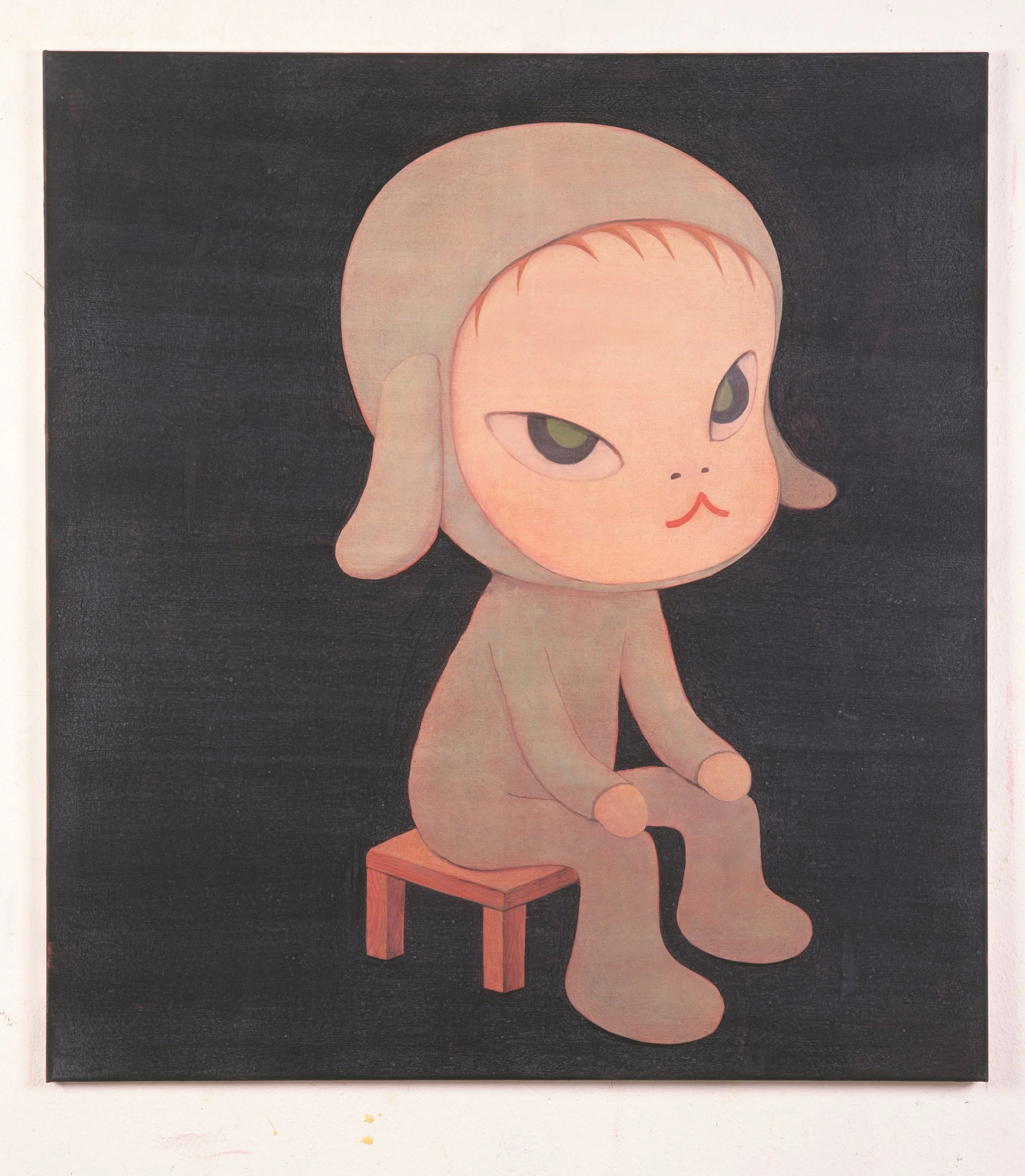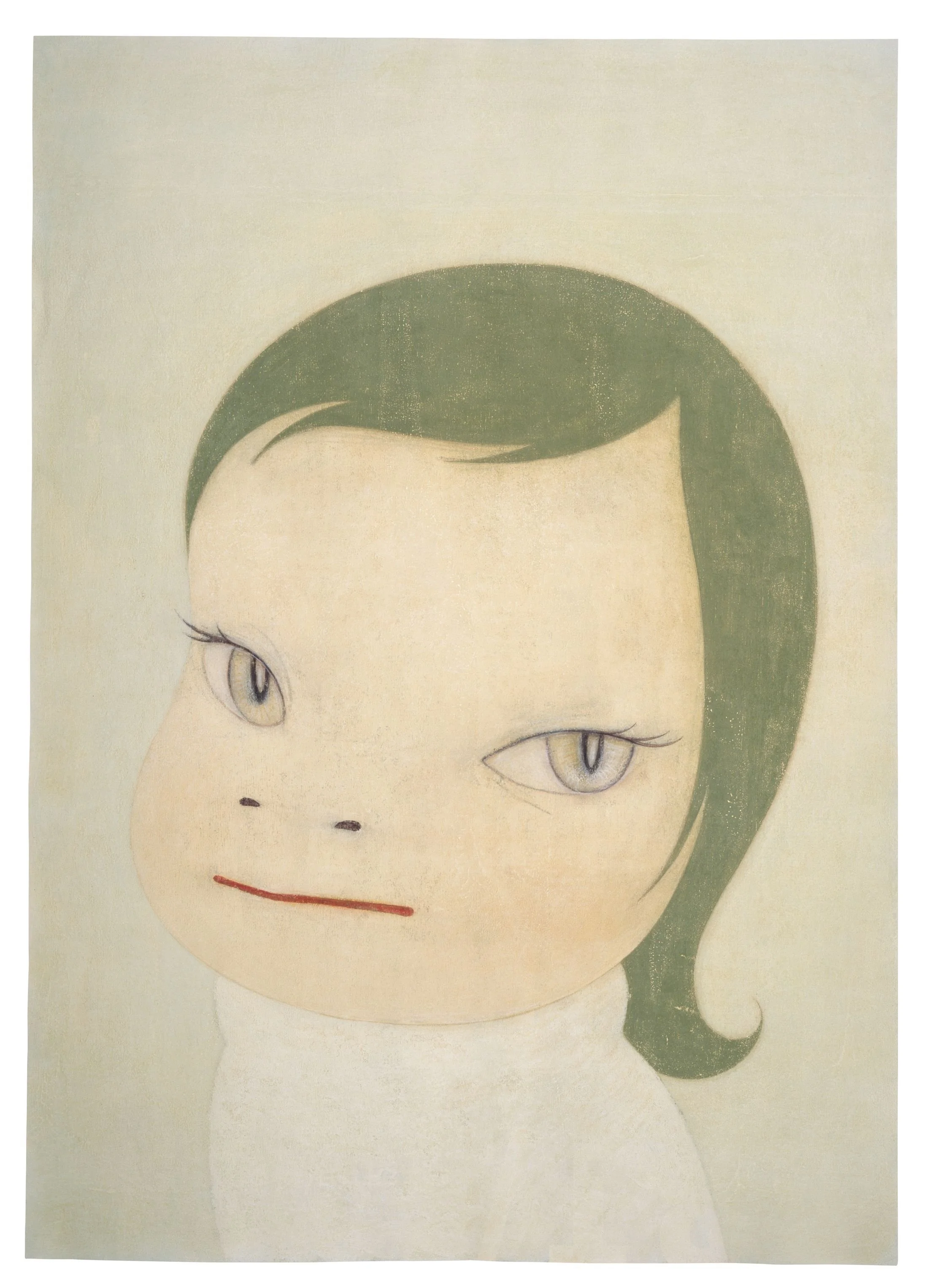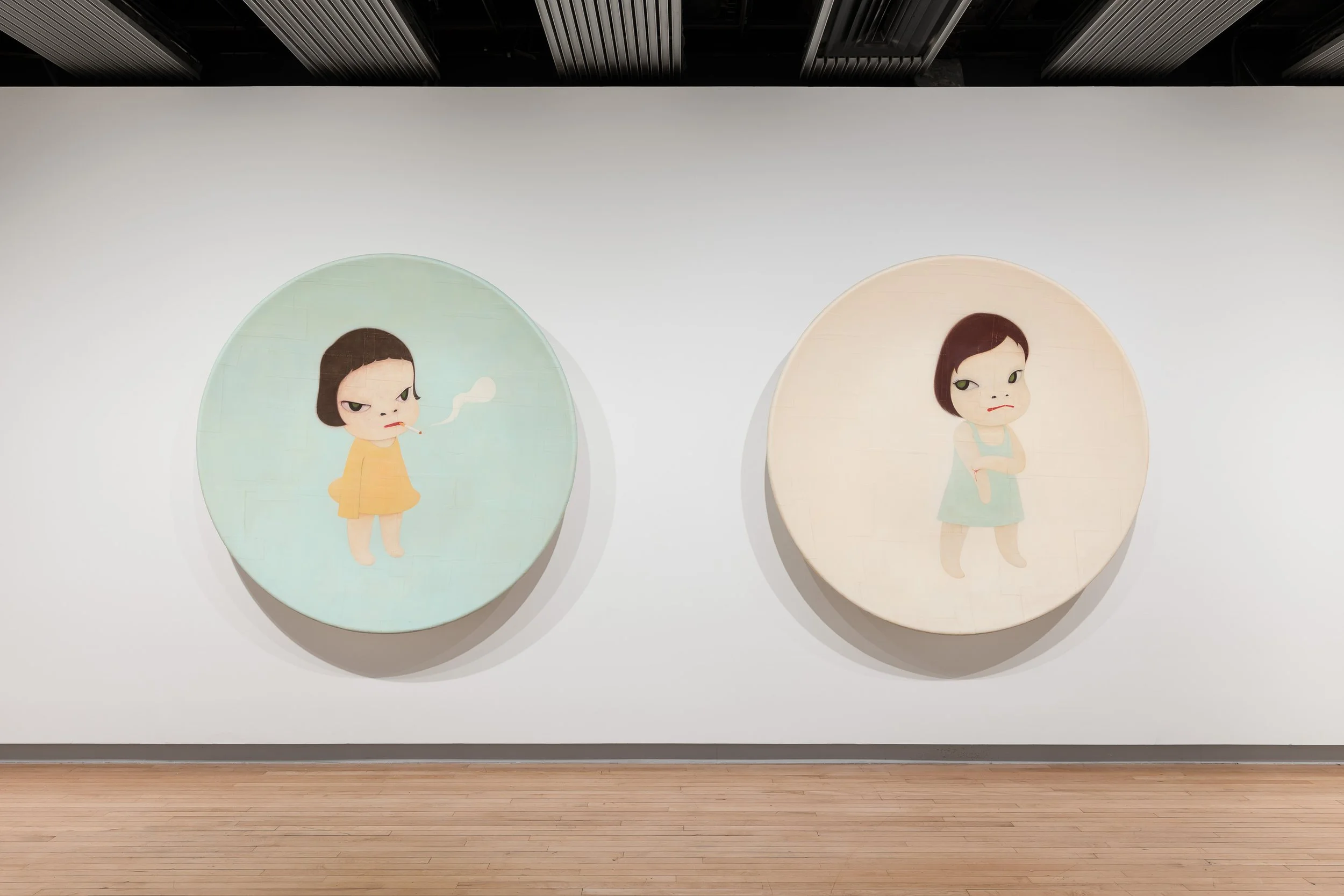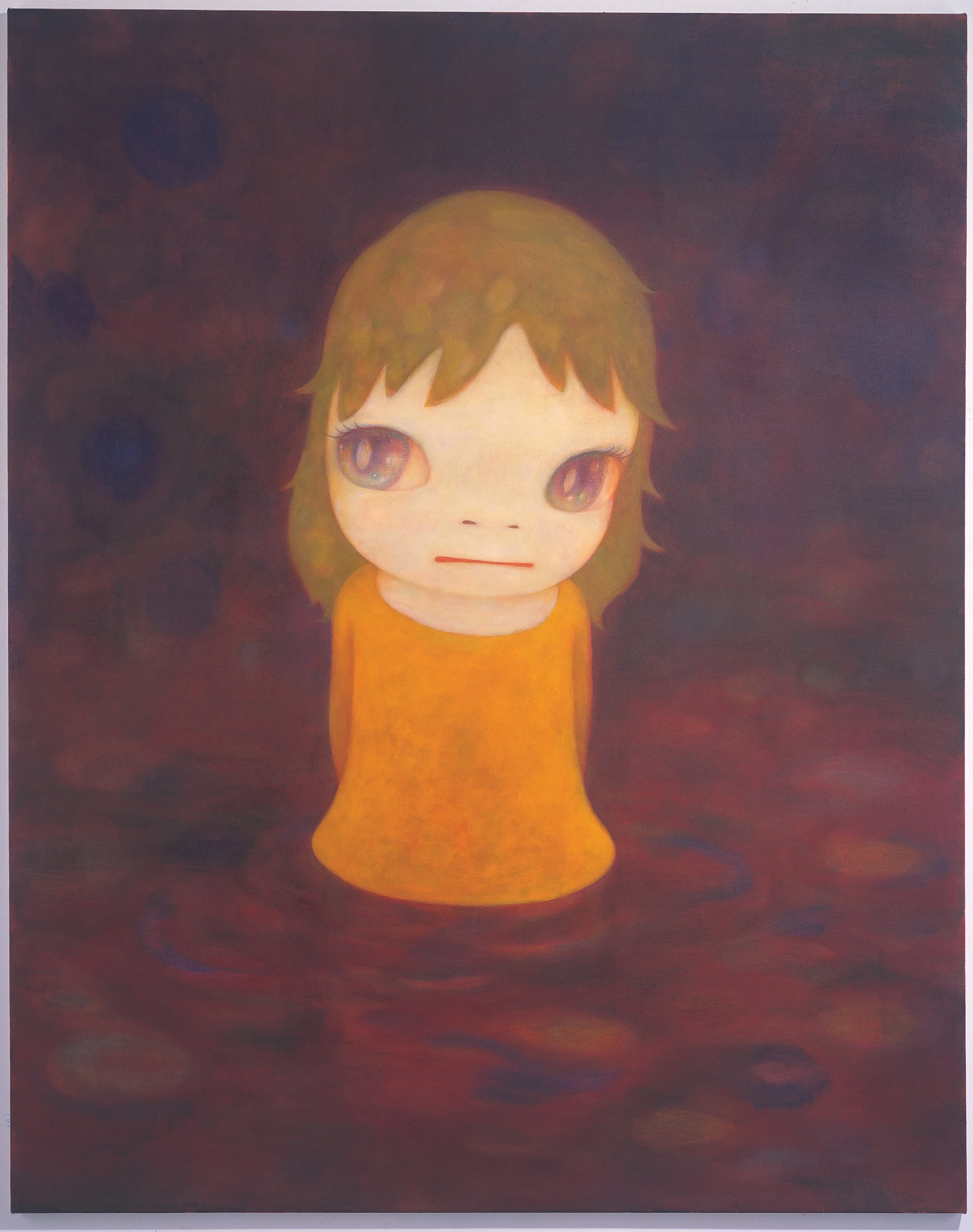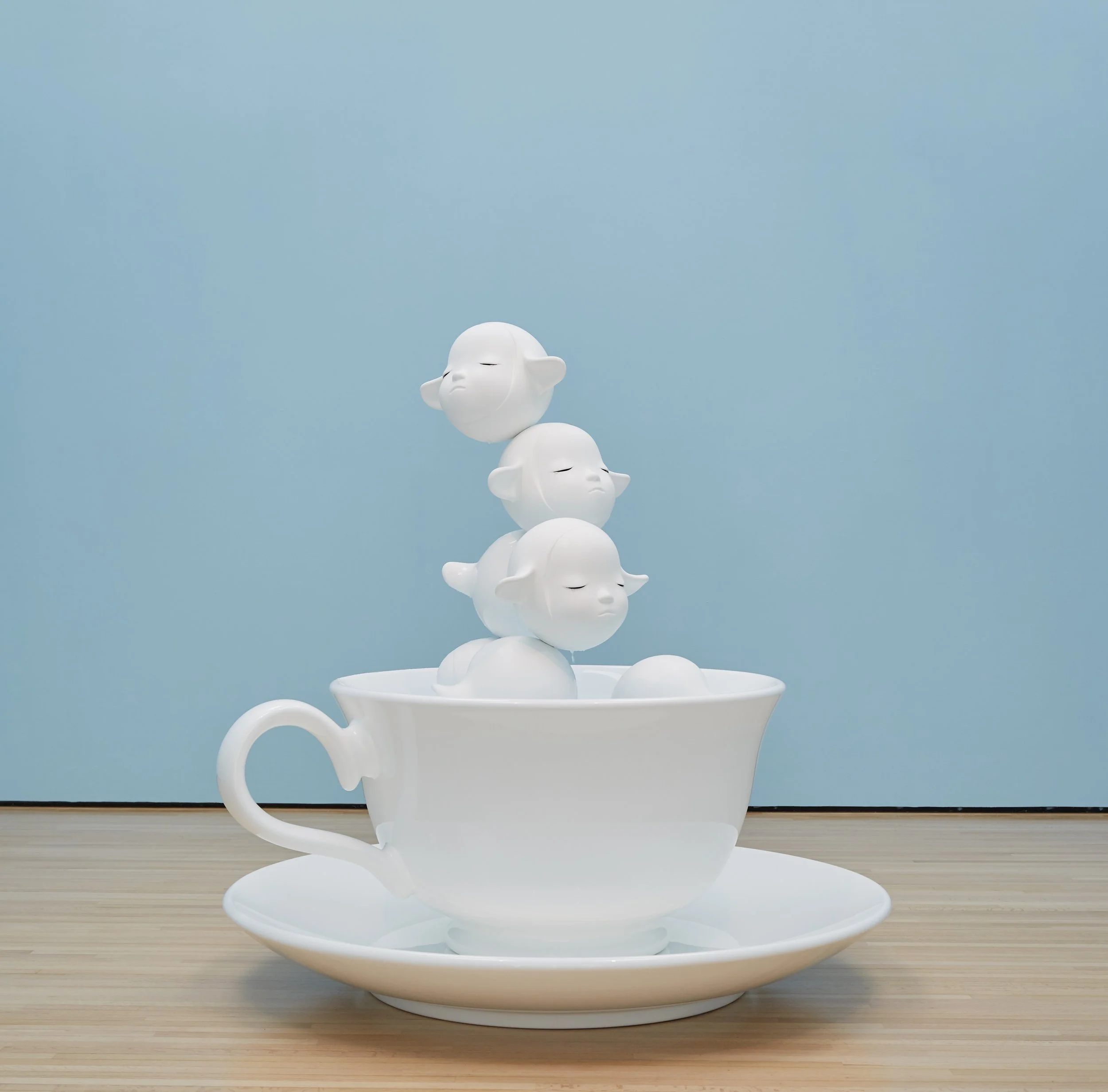Yoshimoto Nara @ The Hayward Gallery
Yoshitomo Nara at the Hayward Gallery confronts sentimentality head-on, replacing sweetness with a quiet, steady resistance.
Cover Image: Yoshitomo Nara, Missing in Action, 1999. Courtesy of Sally and Ralph Tawil and Yoshitomo Nara Foundation. © Yoshitomo Nara.
The first thing you meet in Yoshimoto Nara’s exhibition is a wide-eyed stare—mischievous, petulant, peaceful, disdainful, and eternally piercing. Sleepness Nights (Sitting) (1997) hangs almost at shoulder height, the figure’s gaze soft but immovable, framed by a muted, dark wash that makes the whites and greens of the eyes almost fluorescent. There’s no welcome here, but no rejection either—only the sense that you have been measured and found worth watching.
Yoshimoto Nara, Sleepness Night (Sitting), 1997. © Yoshimoto Nara, courtesy Yoshimoto Nara Foundation.
The Hayward Gallery’s Brutalist shell sharpens this encounter; the hard concrete makes the room feel like a stage, one you’ve stepped onto without rehearsal. From there, the show unfolds not as a neat biography but as a series of constellations—works grouped by recurring motifs, moods, and preoccupations. Early pieces like Harmless Kitty (1994) and Missing in Action (1999) already carry the push-and-pull that defines Nara’s practice. Their child-like figures, painted in flat planes of colour, are stripped of distraction; the simplicity is deceptive, a pared-back language that can hold both playfulness and protest. Green-Haired Cat Girl (2003) turns this ambiguity into something sharper: the hybrid figure’s slightly tilted head, the scratch of coloured pencil against paper, and a gaze that hovers somewhere between curiosity and contempt.
Yoshimoto Nara, Green-Haired Cat Girl, 2003. Acrylic and colored pencil on paper, 76 x 56. Courtesy the artist and Charlotte Feng Ford Collection.
Nara’s teenage years in vibrant Tokyo thread through the work in quiet ways. American folk songs, broadcast late at night over military radio, seep into the mood of the art. That musical pulse is most explicit in works like My Drawing Room (2008) or Banging the Drum (2020), where soft rock riffs from a recreation of the artist’s studio, and a small body holds an instrument with the authority of a seasoned performer. The music here is not decorative, but rather a tool; a weapon; a lifeline. Even in more meditative pieces like In the Milky Lake / Thinking One (2011), you can almost hear a score: the pale blue, water-like reflection of the figure feels like a sustained note, held just long enough to create tension.
The works from his years in Germany, particularly at the Kunstakademie Düsseldorf, add another layer of defiance. Without the language to speak freely, Nara’s early 1990s paintings developed an economy of mark-making that cut against the grain of kawaii culture, and bleeds into even his more recent works, such as Smoking Girl (2005)—its influence visible in the enigmatic expressions of these quintessential, pastel portraits.
Installation view of Yoshimoto Nara. Photo: Mark Blower. Courtesy the artist and the Hayward Gallery.
As you move deeper into the exhibition, the atmosphere shifts. The rooms grow heavier, the colours darker, as the work begins to reflect the collective trauma of the 2011 Tōhoku earthquake, tsunami, and Fukushima disaster. In After the Acid Rain (2006), painted just before these events, the greenish hue of the girl’s hair and the luminescence of her pale skin contrast starkly with the rusty red of the background. The result is a Rothko-esque mastery in subtlety of colour, and a prophetic suggestion of an environment, toxic and poisoned.
Yoshitomo Nara, After the Acid Rain, 2006. Acrylic on canvas, 227 x 182cm. Courtesy of the artist and private collection.
Themes of life and death are continued in Fountain of Life (2001), a sculpture consisting of lamb-eared, child-like heads stacked precariously on one another. Delicate tears drip from their eyes into the giant teacup, reminiscent of a spinning fun-fair ride, in which they balance—only for it to be piped back up to hydrate their lament anew.
Yoshitomo Nara, Fountain of Life, 2001. © Yoshitomo Nara, courtesy Yoshitomo Nara Foundation.
This is Nara’s first UK solo show at a public gallery, and it compresses forty years of work without slipping into a chronological march. Across paintings, drawings, and sculpture, his recurring figures—children, animals—hold their ground with an authority that undercuts their small frames. They are not sentimental. They are not asking to be liked.
There is political charge here, but it’s carried in a low voltage. It is more in the atmosphere than in any single statement. The exhibition is carefully paced, moving between stillness and unease, intimacy and distance. By the time you leave, the figures no longer feel like characters on a wall. They follow you back into the city, non-plussed and ever-charming, still watching.
You can see Yoshimoto Nara at The Hayward Gallery until 31st August 2025. The event is ticketed, and you can book your slot here.
Nicole John
Reviews Co-Editor, MADE IN BED


